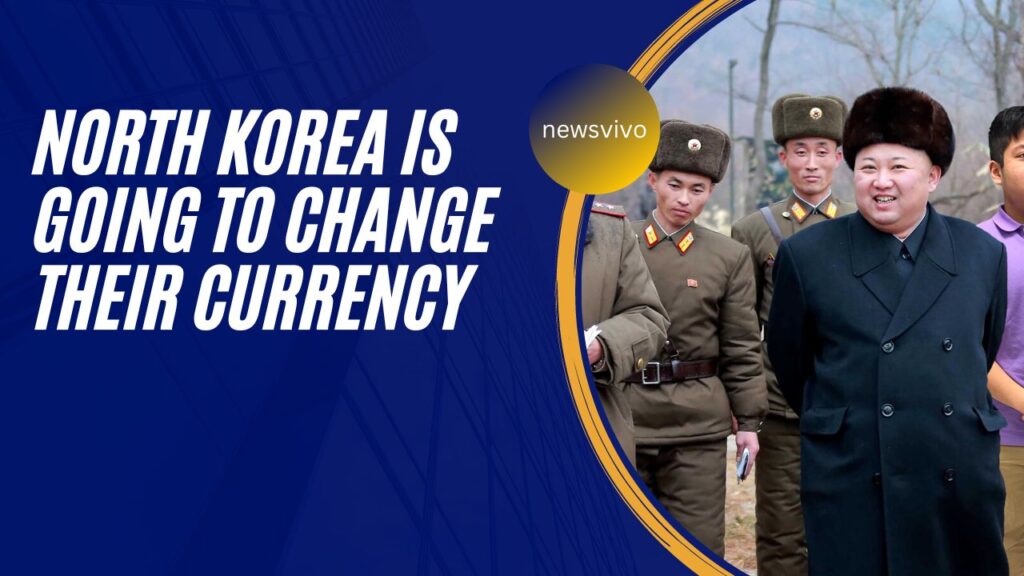Kim Jong Un has suffered economically, an already isolated country made much more so by years of international sanctions over his nuclear programme and border barriers since the coronavirus pandemic.

When North Korean leader Kim Jong Un took power more than a decade ago, he reiterated two pledges made by his family since the country’s creation in 1948: to strengthen the military and develop the economy.
On the military front, Kim, 38, has outperformed his father and grandfather, advancing the country’s nuclear and missile programmes.
He has suffered economically, an already isolated country made much more so by years of international sanctions over his nuclear programme and border barriers since the coronavirus pandemic.
North Korea is desperate for American dollars and other hard currency not just to feed its people, but also to fund Kim’s military and economic objectives. It is smuggling coal and stealing bitcoin. It is also attempting to extract every last penny from the people by selling cellphones and other foreign items to the wealthy, as well as collecting “loyalty” payments in exchange for political favours.
State-run stores play an important role. Customers may pay in US dollars for multinational brands of instant noodles, deodorant, diapers, and shampoo, while change is given back in North Korean won.
Such transfers, as well as other illegal operations, have enabled Kim to keep American funds coming into his bank account. It has provided him with the wherewithal to enhance the country’s arsenal and capabilities, including this month’s test of a new intercontinental ballistic missile.
North Korea is currently shooting missiles on a regular, if not hourly, basis. Washington, Seoul, and Tokyo have all warned that Kim may execute its first nuclear test since 2017.
Kim assembled a large crowd in Pyongyang on April 15, 2012, to give his first public speech as North Korea’s leader. He stated he would shepherd the country through every obstacle or struggle toward prosperity, however he made clear that his first objective would be to “strengthen the People’s Army in every way.”
As he pursued his dual objectives, he utilised a combination of propaganda and intimidation, purging or killing anybody who stood in his way while portraying himself as a “people-loving” leader in state-run media. He has made the administration less opaque by giving regular remarks and making decisions at large party gatherings. Kim even apologised for his flaws, shattering the idea of a spotless, godlike monarch.
But Kim also understood that a genuine breakthrough for his country could only be reached through discussions with the US, which spearheaded the fight for international sanctions. When he met with Donald Trump in 2018, he became the first North Korean leader to meet with a sitting US president.
Despite the fact that North Korea has spent decades perfecting its weaponry, Kim may claim credit for the most of the advancements. During his reign, the country became the first foe of the United States since the Cold War to test an intercontinental ballistic missile and what he said was a hydrogen bomb. He oversaw four of the country’s six underground nuclear tests.
North Korea successfully tested an intercontinental ballistic missile, the Hwasong-15, in 2017, which Kim said was capable of targeting the US with a massive nuclear payload. Since his diplomacy with Trump fell through, Kim has focused on diversifying and modernising his arsenal, revealing and then testing a slew of new weapons ranging from a next-generation ICBM, the Hwasong-17, to nuclear-capable short-range missiles.
Kim directed his government to construct “super-large nuclear warheads” as well as “nuclear weapons smaller, lighter, and tactical” at a party conference in January 2021. He has advocated for the development of hypersonic missiles, submarine-launched intercontinental ballistic missiles, nuclear-powered submarines, and spy satellites. In April, he pledged to build up his nuclear arsenal “as quickly as feasible.”
Despite the failure of some recent ICBM tests, North Korea is thought to have enough plutonium and enriched uranium to produce 45 to 55 nuclear weapons and may have already assembled 20 to 30 warheads, according to estimates from the Nuclear Information Project and the Federation of American Scientists.
During a congressional hearing last summer, John Plumb, the Pentagon’s assistant secretary of defence for space policy, verified that the majority of North Korea’s ballistic missiles were capable of carrying nuclear warheads.
In recent months, the Korea has tested a dizzying array of weaponry, one of which went further and higher than its previous ICBMs. However, North Korea has never fired a missile with a full ICBM range of 6,000 to 9,300 miles, prompting concerns that it possesses fully functional nuclear warheads capable of surviving the violent “reentry” into Earth’s atmosphere and hitting targets across an ocean.
So far, it has fired all of its intercontinental ballistic missiles at purposely lofted angles, sending the rockets soaring high into space. According to missile scientists, their force was powerful enough that if fired at regular angles, they could possibly reach sections or the entire United States.
In 2018, Kim sent a message to Washington: “The United States must understand that this is not just a threat, but a reality,” he warned. “The nuclear button is always on my office desk.”
His arsenal isn’t always simplest a strugglefare deterrent to steady his regime’s protection from overseas invasion however diplomatic leverage to win monetary and different concessions. As a part of his international relations with Trump, Kim halted nuclear and ICBM tests. But whilst it failed, he attempted to reinforce his bargaining electricity through doubling down on increasing his guns program.
Kim appears to have reached the belief that handing over on his promise of army energy is his fine desire for monetary gains, through replacing a part of his arsenal for sanctions relief. The latest torrent of missile tests, analysts say, changed into a part of his try and flaunt his developing risk and produce Washington returned to the negotiating table.
Changes of Economy in North Korea
When he gave his inaugural address in 2012, Kim also promised that his people would “never tighten their belts again,” a commitment his father and grandfather made but did not keep.
He introduced changes that increased factory and agricultural autonomy while maintaining them under governmental control. He established new markets to augment North Korea’s precarious rationing system, which crumbled in the 1990s and resulted to a horrific famine. He pledged to rid the country of corruption and partiality. He announced intentions to establish a slew of free economic zones in order to attract international companies.
The depth of Kim’s economic effort is most seen in Pyongyang, the home of the devoted elite. The city has gotten brighter, with more imports and locally made items on grocery shelves. Its skyline is also being peppered with tall, freshly constructed residential skyscrapers. Much of the alteration is superficial, with decaying structures painted with pastel-color paints.
While other cities lag far behind, Kim has focused his efforts on Pyongyang, touting it as an example of urban growth. North Korea has created a new terminal at the city’s international airport, restored subway stations, and built new amusement parks under Kim’s leadership.
Kim established many new residential zones on the city’s outskirts last year. He promised 50,000 new houses by 2025, the party’s 80th anniversary, to assist ease housing shortages and replace the city’s ageing dwellings. Many are high-end flats given to elites in the intention of keeping their loyalty.
These measures have had minimal impact on the country’s economic prospects.
According to the South Korean statistical office, North Korea crept out of the devastation of the 1990s famine, rising an average of 1.2% each year between 2012 and 2016. But this was before the sanctions and epidemic.
In 2017, the economy began to shrink once more. Kim’s proposed economic zones have yet to be established.
Resort villages intended to lure international tourists remain unfinished or abandoned.
Last year, Kim warned of a potential food catastrophe and advised his people to prepare for terrible times ahead. He has also warned them to “tighten our belts” once again.
Kim is in desperate need of money. In September, he informed parliament that the government’s most essential responsibility was to address the issue of people’s living conditions. According to estimates from South Korean and American analysts, North Korea’s missile launches this year cost hundreds of millions of dollars.
His alternatives are becoming more limited. Between 2017 and 2021, the country’s cumulative trade imbalance — the difference between what it buys and what it sells — was predicted to reach $8.3 billion. Even after accounting for smuggling coal, selling fishing rights, stealing cryptocurrency, and other illegal activities, researchers at the Institute for National Security Strategy, a think tank affiliated with South Korea’s National Intelligence Service, estimate the trade deficit to be at least $1.9 billion.
Kim’s leadership is now attempting to suck as much foreign cash as possible from the population, particularly from North Koreans who have saved money by smuggling products from China.
The nation has tightened down on the usage of the U.S. dollars in nonstate marketplaces, to force people to change them into cash. According to South Korean intelligence officials, an unlicensed money trader was killed for disturbing currency values. The government has urged citizens to deposit their dollar savings in banks, where they would be monitored by the government.
Department shops are stocked with imported products, including Rolex and Tissot wristwatches, Sony and Canon digital cameras, and Dior and Lancôme cosmetics, all of which are prohibited under United Nations sanctions.
Selling telephones and airtime has also proven to be profitable for Kim’s administration. More over one in every five North Koreans is said to own a cellphone.
A variety of cellphones, made in North Korea with Chinese components, are for sale and touted on state television. They come with pre-installed dictionaries and state propaganda, but they also include applications for traffic navigation and games, including rip-offs of Super Mario and Angry Birds, and even one that claims to repel mosquitos with sound.
| Homepage | Click here |
